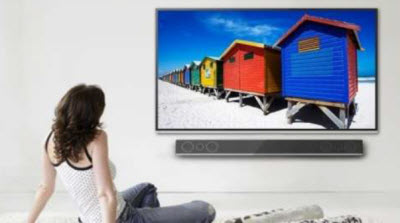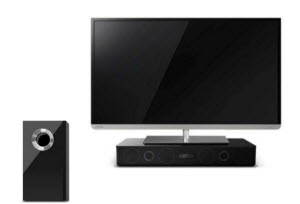UltraHD TVs, also known as 4K TV because they have four times as many pixels on screen as high-definition TVs, are expected to be the hot seller in televisions this year, according to a Toshiba executive as well as market research firm NPD.
“UltraHD is the new hot category, and it is going to grow very quickly,” Scott Ramirez, vice president of product marketing and development for Toshiba in the U.S., said in a press briefing ahead of this week’s huge 2014 International CES tech show in Las Vegas.
UltraHD is an evolution, one step better than your last TV. For the most part, people can tell the difference when they see huge TVs with 4K content. It delivers better picture quality, an important feature alongside screen size and thickness.
“In our lobby, when they pass by our 84-inch UltraHD TV, everybody stops and stares,” Ramirez said.
Of course, you’d expect that from a guy trying to sell you TVs. But the category has a lot more potential than the last big fad, 3D TV, which is sinking fast. A lot will depend on how low the prices for UltraHD TVs go.
“We do not believe that 3D will be an important factor in the future,” he said. “Some manufacturers will continue to include it, but we feel that is just adding cost and not fulfilling a consumer need.”
The overall TV industry is expected to be flat in 2014, according to both Toshiba and NPD. But some categories will continue to grow. The net result is flat revenue and a shift toward different kinds of TVs.
Market researcher DisplaySearch believes that 723,000 UltraHD TVs will be sold in North America in 2014. Toshiba projects about 800,000 for the U.S. alone. But much of the adoption will happen in the middle of the year or later. That’s 10 times more than in 2013, and it’s about 10 percent of the 50-inch and up screen size.
“It’s a needed and a wanted business,” Ramirez said. “Consumers are stepping up to bigger screen sizes and better picture quality. It really does bring back the wow experience.”
Toshiba believes that UltraHD will become the majority of screens 50-inches and higher in less than five years. You can sit in front of an UltraHD TV at half the distance of an HD and not see pixels. The TV will cover more of your field of view and make it a more immersive experience, and it will deliver images to you at 60 frames per second.
Toshiba is on its third-generation 4K engine for its TVs. As the technology moves forward, it will drop in size and be used in a wider range of screen sizes. The company is making its own backlights because that is the way to control picture quality, Ramirez said.
Connected TVs are gaining ground as consumers subscribe to Internet video services like Netflix. In 40-inch and 50-inch TVs, Internet connectivity has hit about 50 percent of the market. It’s not clear if the 32-inch size will shift over to connected TVs, Ramirez said.
U.S. LED TV sales are down 1.9 percent, according to NPD. One of the reasons is that people aren’t buying smaller TVs anymore, since they are putting their money into smartphones and tablets, which have small screens but are mobile, Ramirez said.
Toshiba says one in three TVs sold are 32 inches, the most popular size. Those TVs now have 1080p high-definition video. But in the U.S., bigger is better. Large screen sizes are popular, with 50-inch screens growing the fastest.
Plasma TVs are declining fast, down 33 percent in 2013. The highest revenue volume generator is 59 inches. Average screen sizes are rising.
“For plasma, every screen size is declining, and that screen size will move very quickly over to LED,” Ramirez said.
VentureBeat's mission is to be a digital town square for technical decision-makers to gain knowledge about transformative enterprise technology and transact. Learn More



![Reblog this post [with Zemanta]](http://img.zemanta.com/reblog_e.png?x-id=18491f05-e0cf-4281-b996-f5bfe7ff5462)
